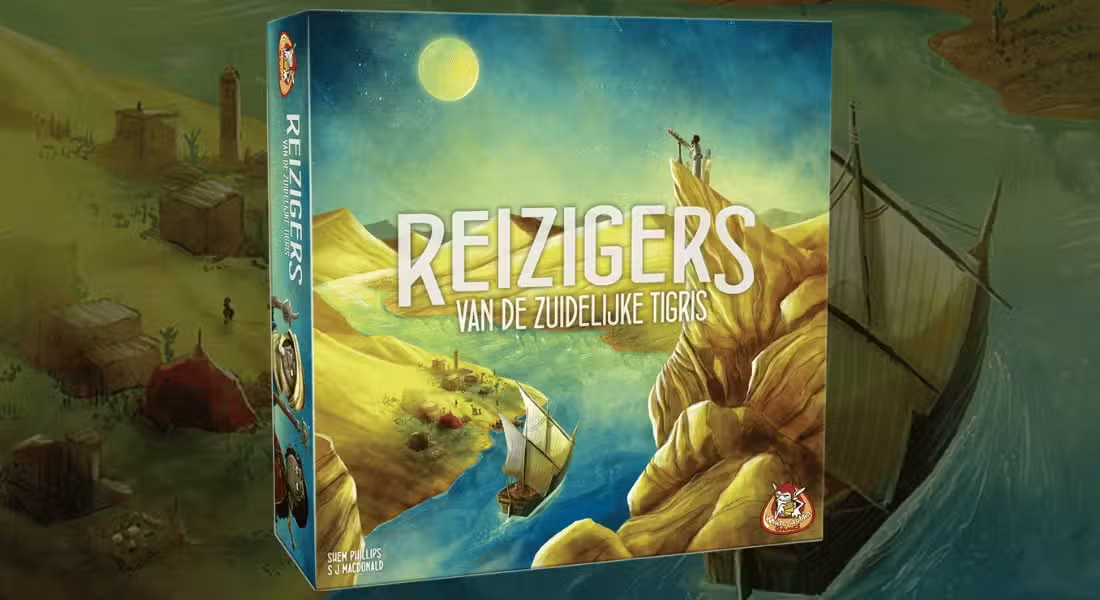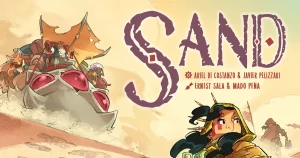Introduction
Imagine a world where farming and war coexist, where hearts are as broken as the rusted gears of old machinery, and where innovation is the key to survival. This is the world of Scythe, an engine-building board game that has taken the gaming community by storm. But what makes Scythe so captivating? Why has it garnered such a dedicated following? Let’s embark on a journey to uncover the allure of this unique game.
| Key Takeaways | Description |
|---|---|
| Game Concept | Scythe is an engine-building board game set in an alternate-history 1920s period. |
| Gameplay Mechanics | The game combines worker placement, area control, and exploration mechanics. |
| Factions | The base game includes five unique factions: Polania, Rusviet, Saxony, Crimea, and Nordic. Each faction has its own unique abilities. |
| Reviews | Scythe has received positive reviews from the gaming community, praised for its unique engine-building mechanism, rich setting, and deep, strategic gameplay. |
| Expansions | There are several expansions available for Scythe, including Invaders from Afar, The Wind Gambit, The Rise of Fenris, and Encounters. Each expansion adds new elements to the game. |
Understanding Scythe
The Concept of Scythe
Scythe isn’t your average board game. It’s a world unto itself, a realm where strategy and creativity intertwine, and where every decision can tip the scales of victory or defeat. But what is the essence of Scythe? What sets it apart from the sea of board games flooding the market?
Scythe is an engine-building game, a term that might sound complex, but is actually quite simple. Imagine you’re building a machine, piece by piece. Each component you add enhances the machine’s functionality, making it more efficient, more powerful. That’s exactly what you’re doing in Scythe. You’re constructing an engine of strategy, steadily improving your position on the board with each move you make.
The Setting: Alternate-history 1920s period
Now, let’s step into the time machine and travel back to the 1920s. But this isn’t the 1920s you read about in history books. This is an alternate-history 1920s Europe, a period that blends the familiar with the fantastical. It’s a time of farming and war, a period where hearts are as broken as the rusted gears of old machinery. Yet amidst the turmoil, there’s a spark of innovation, a glimmer of hope. This is the world of Scythe, a setting as rich and complex as the game itself.

Gameplay
The Engine-Building Mechanism
The engine-building mechanism is at the heart of Scythe. It’s what drives the game forward and sets it apart from many other board games. But what exactly does it mean to build an engine in Scythe?
In the context of Scythe, your ‘engine’ is the system you build throughout the game to generate resources, produce units, and ultimately, gain victory points. It’s a strategic framework that you develop and improve over time, and it’s unique to each player.
At the start of the game, your engine is basic and inefficient. You have limited resources and options. However, as the game progresses, you’ll have opportunities to upgrade your actions, expand your territory, enlist new recruits, and build structures. Each of these improvements is like adding a new part to your engine, making it more efficient and powerful.
For example, upgrading your actions allows you to perform more powerful moves or gain additional benefits from basic actions. Enlisting recruits can provide ongoing bonuses whenever you or your neighboring players take certain actions. Building structures can give you special abilities and contribute to your end-game scoring.
However, building an efficient engine in Scythe isn’t just about adding new parts. It’s also about how well these parts work together. The best engines are those where the parts synergize well with each other, creating a smooth and efficient system that can outperform and outscore your opponents.
In essence, the engine-building mechanism in Scythe is about strategic growth and improvement. It’s about starting with a basic set of actions and resources and gradually building up a powerful system that can propel you to victory. It’s a challenging and rewarding process that adds depth and complexity to the game, making every playthrough a unique and engaging experience.
Worker Placement, Area Control, and Exploration
Scythe is a game that beautifully blends several gameplay mechanics, each contributing to the overall strategic depth of the game. Let’s break down these mechanics and see how they shape the gameplay.
Worker Placement
In Scythe, each player starts with a number of workers. These workers can be placed on different areas of the game board to perform various actions such as gathering resources, building structures, or producing goods. The placement of your workers is a strategic decision in itself. You need to consider where the most valuable resources are, where you can best utilize your workers’ abilities, and how to prevent your opponents from accessing key areas.
Area Control
Area control is another crucial aspect of Scythe. The game board is divided into several territories, and controlling these territories is a key to victory. Each territory you control gives you access to resources, strategic advantages, and contributes to your power in the game. However, controlling a territory requires careful planning and strategic maneuvering of your units. You need to defend your territories from your opponents while also looking for opportunities to expand your control.
Exploration
Exploration in Scythe is not just about discovering new territories but also about understanding the game’s dynamic environment and adapting your strategies accordingly. As you explore the game board, you’ll encounter different situations that will challenge your strategies and force you to make tough decisions. Exploration in Scythe is a journey of discovery, filled with surprises and opportunities.
In essence, the gameplay of Scythe is a delicate balance of worker placement, area control, and exploration. Each mechanic is intertwined with the others, creating a complex web of strategic possibilities. Mastering these mechanics is the key to mastering Scythe.
The Factions of Scythe
In the base game of Scythe, players can choose from five factions, each with its own unique abilities and characteristics. Let’s take a closer look at each faction:
Polania (Meander): Representing Poland, the Polania faction has the ability to choose two options from each encounter card, giving them a wider range of choices during encounters.
Rusviet (Relentless): Based on Imperial Russia, the Rusviet faction has the power to take the same action in consecutive turns, allowing for a more flexible strategy.
Saxony (Dominate): Representing Imperial Germany, the Saxony faction can complete multiple objectives and win multiple combats in the same turn, making them a formidable opponent.
Crimea (Coercion): Based on Ukraine, the Crimean faction can use combat cards as resources, providing them with additional strategic options.
Nordic (Swim): Representing Scandinavia, the Nordic faction has the ability to cross rivers with their workers from the start of the game, giving them an advantage in mobility and resource gathering.
Each faction in Scythe offers a unique gameplay experience, and mastering each one requires understanding their unique abilities and devising strategies that take advantage of these abilities. The choice of faction can greatly influence your strategy and approach to the game, adding another layer of depth and replayability to Scythe.
Strategies for Winning
So, how do you win at Scythe? Is there a secret formula, a surefire strategy that guarantees victory? The truth is, there’s no one-size-fits-all answer. Scythe is a game of strategy and adaptability, where the path to victory depends on your ability to read the board, anticipateyour opponents’ moves, and adapt your strategy on the fly. But don’t worry, we’ve got some tips to get you started.
First, focus on building a strong engine. The more efficient your engine, the more actions you can take, and the more resources you can gather. Second, pay attention to your opponents. What strategies are they using? What resources are they gathering? By keeping an eye on your opponents, you can anticipate their moves and adjust your strategy accordingly. Finally, don’t forget to explore. The world of Scythe is full of opportunities, and the more you explore, the more you can uncover.
Scythe Reviews
Reviews from BoardGameGeek
But don’t just take our word for it. Let’s see what the gaming community has to say about Scythe. On BoardGameGeek, one of the most popular board game websites, Scythe has received rave reviews. Players praise its unique engine-building mechanism, its rich setting, and its deep, strategic gameplay. But don’t let the praise fool you. Scythe is a complex game that requires strategic thinking and careful planning. Are you up for the challenge?
Reviews from Stonemaier Games
Stonemaier Games, the publisher of Scythe, also has plenty to say about the game. They describe Scythe as an “asymmetric, competitive board game” that offers a unique blend of strategy and storytelling. They also highlight the game’s stunning artwork, which brings the world of Scythe to life and adds an extra layer of immersion to the gameplay.
Reviews from Amazon
On Amazon, Scythe has garnered a plethora of positive reviews. Customers praise the game’s high-quality components, its engaging gameplay, and its replayability. One reviewer writes, “Scythe is a game that keeps you coming back for more. Every game is a new adventure, a new challenge to overcome.”
Scythe Expansions
Overview of Scythe Expansions
Scythe: Invaders from Afar This expansion adds two new factions to the game, complete with 10 miniatures, 62 custom wooden tokens, and 2 faction mats. These new factions introduce fresh strategies and challenges, making the game even more diverse and replayable.
Scythe: The Wind Gambit The Wind Gambit expansion introduces airships to the world of Scythe. These airships, represented by beautiful miniatures, add a new layer of strategy to the game, allowing players to move workers and resources across the board quickly.
Scythe: The Rise of Fenris The Rise of Fenris is the final expansion in the Scythe trilogy. It offers a narrative-driven campaign that unfolds over multiple sessions. Each session introduces new elements to the game, making every session a unique experience.
Scythe: Encounters This expansion adds a deck of encounter cards, which players draw during the game to face new challenges and make tough decisions that can significantly affect their strategy.
How Expansions Enhance the Game
Each expansion enhances the base game of Scythe in unique ways. The Invaders from Afar expansion introduces new factions, adding variety and replayability to the game. The Wind Gambit adds an entirely new gameplay mechanic with the introduction of airships, offering new strategic possibilities. The Rise of Fenris adds a narrative-driven campaign that evolves over time, providing a rich and immersive gaming experience. Lastly, the Encounters expansion adds a deck of encounter cards that bring unexpected challenges and decisions into the game, keeping players on their toes.
In conclusion, the expansions for Scythe not only add new content and gameplay mechanics but also enhance the depth and replayability of the game. Whether you’re a seasoned Scythe player or a newcomer, these expansions offer fresh and exciting ways to experience the world of Scythe.
Frequently Asked Question (FAQ)
Q: What is Scythe?
A: Scythe is a board game developed by Stonemaier Games. It is set in an alternate history of 1920s Europe where players control factions with mechs in a race to increase their wealth and power.
Q: How do you play Scythe?
A: To play Scythe, each player chooses a faction and player mat. The objective of the game is to gain the most points by completing objectives and increasing your resources. Players take turns to perform various actions such as enlisting new recruits, building structures, and moving across the board. Combat is also an element of the game which is resolved through combat and encounter cards.
Q: How many factions are there in Scythe?
A: Scythe offers a total of five factions to choose from, each with its own unique abilities and benefits. There are also objective cards that provide players with different goals they can aim for to gain more points.
Q: Can you play Scythe solo?
A: Yes, Scythe can be played solo with special rules and an Automa system that enables a player to play against an artificial intelligence-controlled opponent.
Q: What is engine-building in Scythe?
A: Engine-building is a strategy in Scythe where players create an efficient combination of structures, mechs, and resources to increase their production and points in the game.
Q: How do you start the game?
A: The game starts with each player choosing their faction and player mat. Then, they place their starting positions on the board and are given a set of starting resources. The first player is determined randomly.
Q: Is direct conflict a major part of Scythe?
A: While Scythe does involve combat, it is not a major part of the game. Players can play the game without engaging in direct conflict and still be competitive.
Q: What is the end game in Scythe?
A: The game ends when a player achieves the sixth achievement star or places all their mechs, workers, and buildings on the board. Players then tally their points, and the player with the most points wins.
Q: Where can I buy Scythe?
A: Scythe can be purchased from various online retailers such as BoardgameShop.
Conclusion
So, are you ready to step into the world of Scythe? Are you ready to build your engine, place your workers, and conquer the board? Scythe is more than just a game. It’s a journey into a world of strategy and innovation, a world where every decision matters, and where victory is always within reach. So gather your friends, set up the board, and let the adventure begin. After all, in the world of Scythe, the possibilities are as endless as your imagination.
Remember, this is just a game. But in the heat of the moment, when you’re one move away from victory, it feels like so much more. That’s the magic of Scythe, a game that captivates, challenges, and rewards in equal measure.
So, why not give Scythe a try? Who knows, you might just find yourself falling in love with this engine-building, worker-placing, area-controlling marvel of a game. And when you do, remember this: in the world of Scythe, there’s always a new strategy to try, a new path to victory to discover.
In the end, Scythe is more than just a board game. It’s a testament to the power of imagination, a celebration of strategic thinking, and a tribute to the timeless appeal of good, old-fashioned fun. So, are you ready to play?






